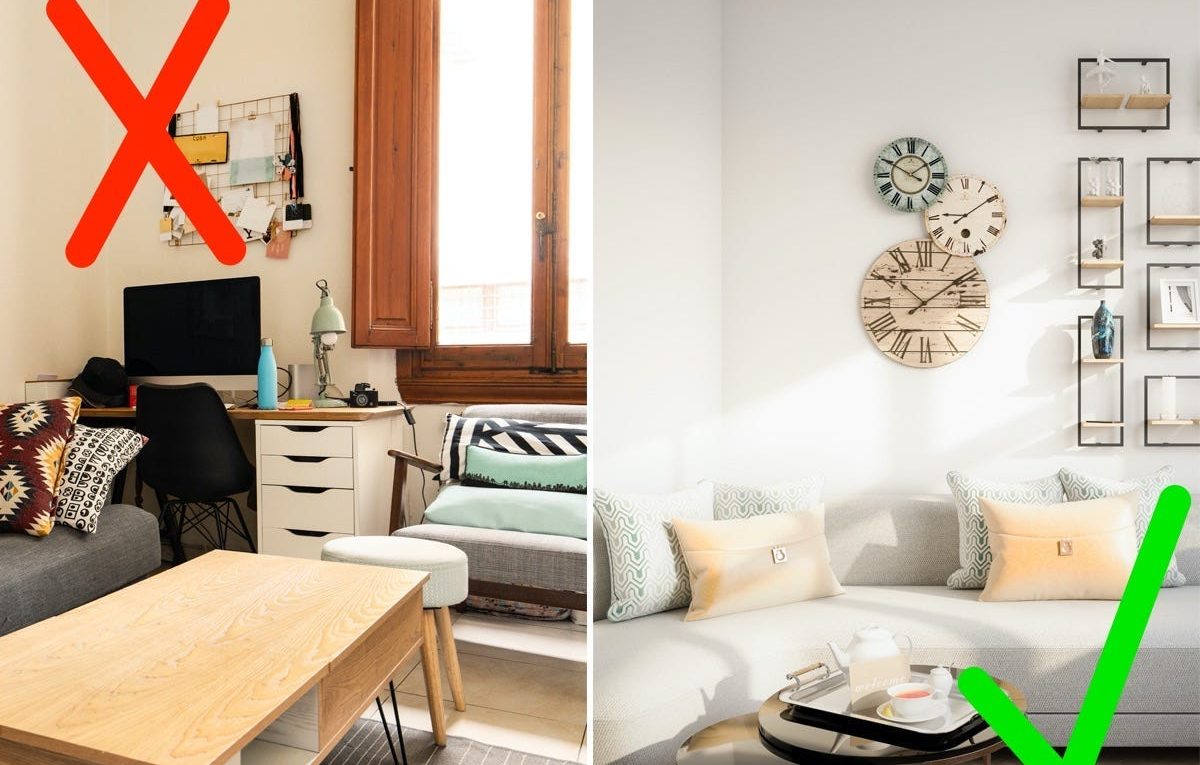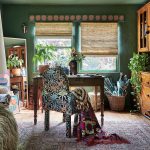The Connection between Small Space Decorating and Sustainability
Table of Contents
Connecting Small Space Decorating to Sustainability
Sustainable living—living in harmony with nature and conserving resources—has become increasingly popular in the last few decades. Small space decorating is one way to incorporate sustainability into our lifestyles. By understanding the underlying principles of sustainable interior design, we can create cozy, comfortable, and ecologically responsible living spaces that afford us many rich long-term benefits.
Make the Most of What You Have
One of the best ways to decorate sustainably is to make sure you’re making the most of what you already have. This means utilizing items that are already in your home, as well as finding creative ways to repurpose what you have. Multi-functioning furniture and decor items can save you time and money, as well as help nourish your creativity. To spruce up a space without spending much money, try using vintage and thrifted items, or painting wooden furniture to add a new look to your space.
Pay Attention to Color and Lighting
When decorating sustainably, it’s important to pay special attention to the colors and lighting in your space. Choose lighter colors to maximize natural light and make a room feel bigger. Decorating small spaces can make them feel cramped, so it’s important to be mindful of how the colors and light in your home interact with space. It is also important to use paint and products low in volatile organic compounds (VOCs) in order to reduce potential health hazards.
Go Natural to Stay Natural
Adding natural elements to your home, such as soft furnishings, plants and polished stone or wood elements, can make you home look stylish and help reduce your environmental footprint. Natural materials such as wood, stone and wool are often considered more sustainable than man-made materials like plastic and synthetic textiles, as they are more biodegradable. Wood and stone can also last a long time, whereas man-made materials may eventually end up in landfills.
Design for Flexibility
When designing for a small space, it’s important to think about the future. Incorporating flexible furniture pieces and elements that can be used in different ways is key. For example, choose furniture such as ottomans or swivel chairs that can be moved or re-purposed easily. Look for pieces that can be easily rearranged or integrated into different arrangements. This will help you create a space that can be used in multiple ways and will last for many years to come.
Choose Sustainably Sourced Materials Wherever Possible
When decorating for sustainability, one of the best things you can do is make sure your materials are coming from sustainable sources. Choose products that are made locally, organic, non-toxic, recycled, or manufactured through renewable energy sources. It may be more expensive to buy from sustainable sources, but it’s worth it in the long run, both for the environment and for your own health.
Consume Less
One of the most important things you can do to live more sustainably is to consume less. When shopping for items for your home, choose only what you need and items that can last for a long time. It’s important to think about the materials and where they come from—are they recyclable or biodegradable? Does the item have a long lifespan? Be mindful of where your products come from and their environmental impact.
Decorating small spaces with the intention of sustainability can help us create beautiful, comfortable and responsible living spaces. By making the most of what you have, being mindful of color and lighting, utilizing natural elements, being flexible with furniture pieces and sourcing materials sustainably, we can all do our part in living ecologically conscious lifestyles.
Suggested:
Creating a Sustainable Decor in Small Spaces
Sustainable living is one of the core principles of living in harmony and conserving resources. Nowadays, many people are realizing the need to incorporate sustainable decor into their lives, not least of all for those with limited space. Decorating small space with the goal of sustainability is an important and achievable endeavor, and it can provide decorators with many long-term benefits.
Utilizing What You Already Have
From the outset of any decorating project, it is important to make the most of what is already at your disposal. This can be furniture, decor pieces, vintage or thrifted items and even plants. Multi-functioning pieces of furniture, such as ottomans or swivel chairs, can provide flexible seating solutions while still saving the decorator money and time. Further customisation can be achieved through painting wooden furniture, and with the plentiful array of thrifted and vintage items available, cost conscious decorators can achieve enviable results without breaking the bank.
Pay Attention to Color and Lighting
Color can have a significant impact in any environment, both in terms of energy and visual aesthetics. For those decorating in small spaces this becomes even more important, as the room size can dictate the brightness and energy of the space. Therefore, it is important to choose lighter colors to maximize natural light, as well as to create a bigger visual space. Additionally, false lighting is also an integral part of decorating in small spaces, with additional lighting sources and lamps creating visual cues and adding to the atmosphere of the room. It is important to ensure all products used are low on Volatile Organic Compounds, commonly referred to as VOCs, in order to prevent potential health risks.
Incorporating Natural Elements
A key part of remaining sustainable while decorating is the use of natural elements throughout the space. Natural materials such as wood, stone and wool are seen as more sustainable than their man-made counterparts, as they are more biodegradable and may last longer. Further to this, the incorporation of soft furnishings such as rugs, throws and cushions, as well as potted plants and polished pieces of stone or wood, can add a cozy and stylish feeling to the room.
Flexible Design
Designing for flexibility is key for those looking to live sustainably, both in terms of the furniture pieces and items used in decorating the small space, as well as in terms of thought for the future. Incorporating flexible furniture pieces, such as chairs and tables can be easily moved around and repurposed, adding to the longevity of the design. Additionally, repurposing items such as bookends or side tables can add an extra element of surprise and creativity.
Choose Responsibly Sourced Materials Wherever Possible
Wherever possible, choose materials which have been sustainably sourced, such as those made locally or through renewable energy sources. Buying organic, non-toxic and recycled products can make all the difference in terms of a smaller environmental footprint.
Consume Less
Finally, one of the most important principles of living sustainably is to consume less. When shopping for items for decorating small space, buy only what you need and make sure that the items will last a long time. Researching the materials used in the products you buy and their environmental impact, as well as where they come from, is essential to living a sustainable lifestyle.
Decorating your small space doesn’t have to be a daunting or unsustainable task when you make use of the principles of sustainability. With a thoughtful approach to colors and lighting, as well as flexible and multi-use designs, adorning your home with natural elements, and choosing responsibly sourced materials where possible, you can make your living space cozy, comfortable and planet-friendly.





